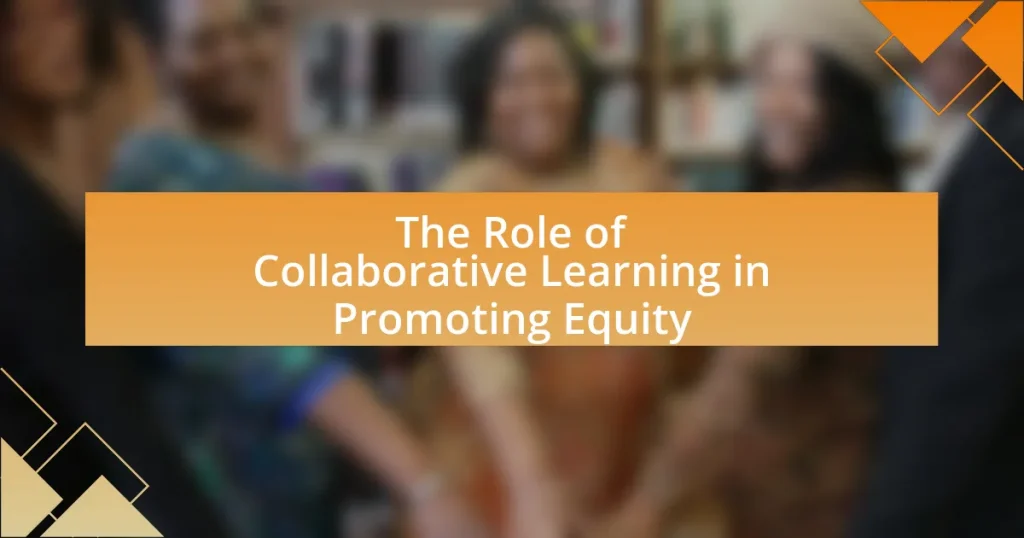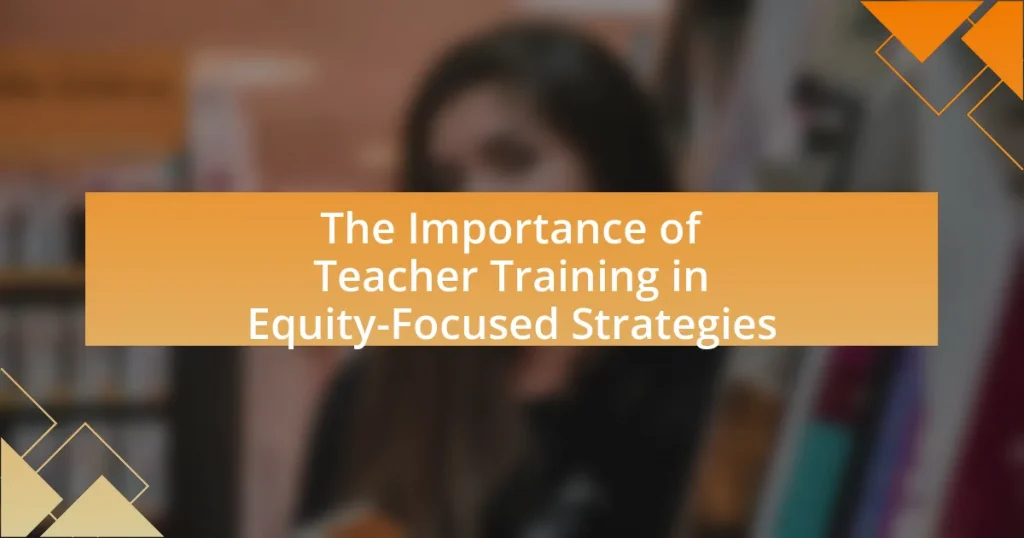Project-Based Learning (PBL) offers significant advantages for diverse learners by enhancing engagement, collaboration, and critical thinking. This educational approach allows students from various backgrounds to work together on real-world problems, fostering inclusivity and improving academic performance. PBL accommodates different learning styles, promotes teamwork, and enhances problem-solving abilities, making it particularly effective for students who may struggle in traditional settings. The article explores how PBL benefits diverse learners, addresses specific learning styles, and provides best practices for educators to implement this method effectively while overcoming potential challenges.

What are the Benefits of Project-Based Learning for Diverse Learners?
Project-Based Learning (PBL) significantly benefits diverse learners by promoting engagement, collaboration, and critical thinking. PBL allows students from various backgrounds to work together on real-world problems, fostering a sense of belonging and community. Research indicates that students involved in PBL demonstrate higher retention rates and improved academic performance, as they apply knowledge in practical contexts. A study by Thomas Markham in “Project Based Learning Handbook” highlights that PBL enhances motivation and self-directed learning, particularly for students who may struggle in traditional educational settings. This approach accommodates different learning styles and cultural perspectives, making education more inclusive and effective for all learners.
How does Project-Based Learning cater to different learning styles?
Project-Based Learning (PBL) effectively caters to different learning styles by engaging students through hands-on, collaborative projects that allow for varied modes of expression and understanding. Visual learners benefit from creating diagrams and presentations, auditory learners engage through discussions and presentations, while kinesthetic learners thrive in active, hands-on tasks. Research by the Buck Institute for Education indicates that PBL promotes deeper learning by accommodating these diverse styles, enhancing retention and understanding. This adaptability makes PBL a powerful educational approach for addressing the unique needs of all learners.
What specific learning styles are addressed by Project-Based Learning?
Project-Based Learning (PBL) addresses several specific learning styles, including kinesthetic, visual, and interpersonal learning styles. Kinesthetic learners benefit from hands-on activities and real-world problem-solving, which are central to PBL. Visual learners engage with visual aids and presentations that often accompany project work, enhancing their understanding. Interpersonal learners thrive in collaborative environments, as PBL typically involves teamwork and communication among peers. Research indicates that PBL effectively caters to these diverse learning styles, promoting deeper engagement and retention of knowledge.
How does this approach enhance engagement among diverse learners?
Project-Based Learning (PBL) enhances engagement among diverse learners by fostering collaboration, critical thinking, and real-world application of knowledge. This approach allows learners from various backgrounds to contribute their unique perspectives and skills, creating a more inclusive learning environment. Research indicates that PBL increases motivation and participation, as students are more invested in projects that relate to their interests and experiences. For instance, a study by Thomas Markham in “Project Based Learning Handbook” highlights that students engaged in PBL demonstrate higher levels of enthusiasm and commitment, leading to improved academic outcomes.
Why is Project-Based Learning effective for fostering collaboration?
Project-Based Learning (PBL) is effective for fostering collaboration because it inherently requires students to work together towards a common goal. In PBL, learners engage in complex, real-world projects that necessitate communication, teamwork, and shared responsibility, which cultivates collaborative skills. Research indicates that collaborative learning environments enhance student engagement and improve learning outcomes; for instance, a study by Johnson and Johnson (1999) found that cooperative learning strategies significantly increase academic achievement and interpersonal skills. Thus, the structure of PBL not only promotes collaboration but also leads to measurable improvements in student performance and social interaction.
What role does teamwork play in Project-Based Learning?
Teamwork is essential in Project-Based Learning as it fosters collaboration, enhances problem-solving skills, and promotes diverse perspectives. In a team setting, learners engage in shared responsibilities, which encourages communication and the exchange of ideas, leading to more innovative solutions. Research indicates that collaborative learning environments improve student engagement and retention of knowledge, as evidenced by a study published in the “Journal of Educational Psychology,” which found that students working in teams performed better academically compared to those who worked individually. This collaborative approach not only prepares learners for real-world scenarios but also builds social skills critical for future success.
How does collaboration benefit diverse learners in a project setting?
Collaboration benefits diverse learners in a project setting by fostering inclusive participation and enhancing learning outcomes. When learners from various backgrounds work together, they share unique perspectives and skills, which enriches the project and promotes critical thinking. Research indicates that collaborative learning environments improve engagement and motivation, particularly for students who may feel marginalized in traditional settings. A study by Johnson and Johnson (1999) found that cooperative learning strategies lead to higher achievement and greater retention of information among diverse groups. This evidence supports the notion that collaboration not only facilitates knowledge sharing but also builds social skills and confidence among diverse learners.
What impact does Project-Based Learning have on critical thinking skills?
Project-Based Learning significantly enhances critical thinking skills by engaging students in real-world problem-solving and collaborative projects. This educational approach requires learners to analyze complex issues, evaluate information, and develop solutions, fostering deeper cognitive processes. Research conducted by Thomas Markham in “Project Based Learning Handbook” indicates that students involved in project-based learning demonstrate improved analytical skills and creativity, as they must synthesize knowledge from various disciplines to address challenges effectively.
How does this learning method encourage problem-solving abilities?
Project-Based Learning (PBL) encourages problem-solving abilities by immersing learners in real-world challenges that require critical thinking and collaboration. This method promotes active engagement, as students must analyze problems, develop solutions, and implement their ideas in a practical context. Research indicates that PBL enhances students’ ability to apply knowledge creatively and adaptively, fostering skills such as inquiry, analysis, and evaluation. A study by Thomas Markham in “Project Based Learning Handbook” highlights that students engaged in PBL demonstrate improved problem-solving skills compared to traditional learning methods, as they learn to navigate complex situations and work effectively in teams.
In what ways does it promote creativity among diverse learners?
Project-Based Learning (PBL) promotes creativity among diverse learners by encouraging collaboration, critical thinking, and real-world problem-solving. In PBL, students work together on projects that require them to explore various perspectives and ideas, fostering an environment where creativity can flourish. Research indicates that collaborative learning environments enhance creative thinking skills, as students are exposed to different viewpoints and approaches (Johnson & Johnson, 2009). Additionally, PBL allows learners to engage in hands-on activities that connect to their interests and cultural backgrounds, further stimulating creative expression. This approach not only nurtures individual creativity but also cultivates a collective creative process, making it particularly effective for diverse learners.
How can educators implement Project-Based Learning effectively?
Educators can implement Project-Based Learning (PBL) effectively by designing projects that are relevant to students’ interests and real-world issues. This approach engages students actively, fostering critical thinking and collaboration. Research indicates that when projects are aligned with students’ experiences and aspirations, engagement increases, leading to deeper learning outcomes. For instance, a study by Thomas Markham in “Project Based Learning Handbook” highlights that projects should incorporate student voice and choice, allowing learners to take ownership of their work. Additionally, educators should provide structured guidance and support throughout the project, ensuring that students develop necessary skills while maintaining a focus on learning objectives.
What challenges might educators face when using Project-Based Learning?
Educators may face several challenges when using Project-Based Learning (PBL), including time constraints, resource limitations, and varying student engagement levels. Time constraints arise as PBL often requires more instructional time than traditional methods, making it difficult to cover the curriculum comprehensively. Resource limitations can hinder the implementation of PBL, as educators may lack access to necessary materials or technology. Additionally, varying student engagement levels can pose a challenge, as some students may thrive in a PBL environment while others may struggle to stay motivated or focused on the project. These challenges can impact the effectiveness of PBL in diverse learning environments.
What are the best practices for maximizing the benefits of Project-Based Learning for diverse learners?
To maximize the benefits of Project-Based Learning (PBL) for diverse learners, educators should implement differentiated instruction tailored to individual learning needs. This approach allows teachers to modify content, process, and products based on students’ varying abilities, interests, and cultural backgrounds. Research indicates that when instruction is differentiated, students demonstrate higher engagement and achievement levels, particularly in diverse classrooms. For instance, a study by Tomlinson (2001) highlights that differentiated PBL fosters inclusivity and enhances learning outcomes by addressing the unique strengths and challenges of each learner. Additionally, incorporating collaborative group work encourages peer learning and social interaction, which are essential for diverse learners to thrive in a PBL environment.



